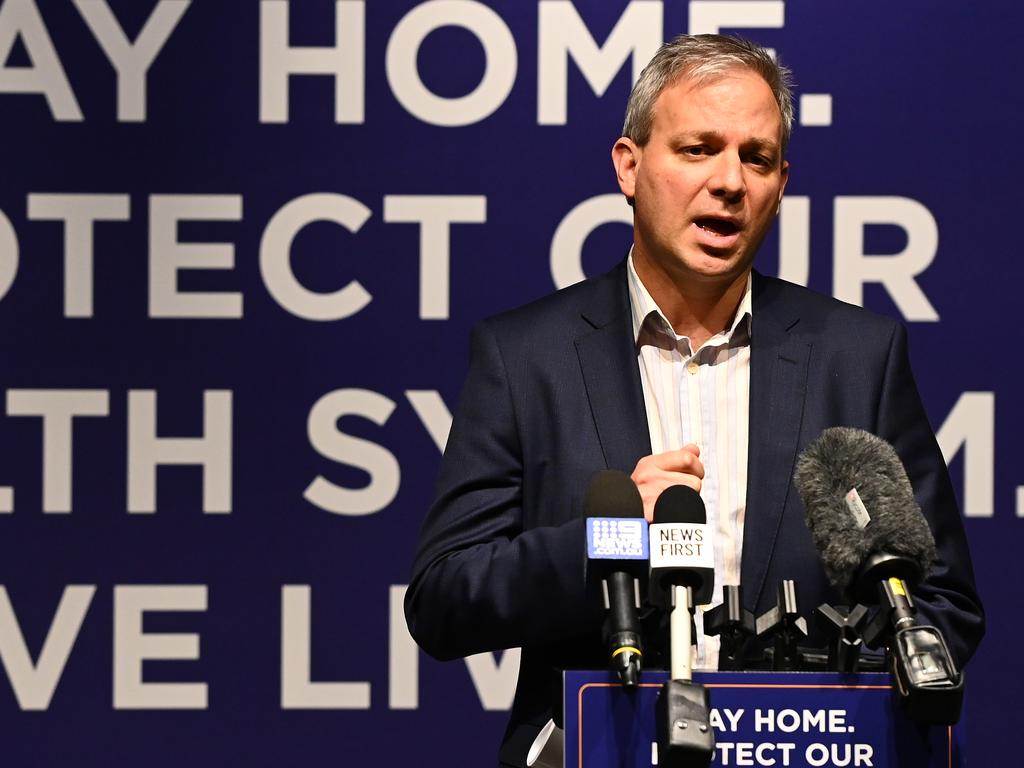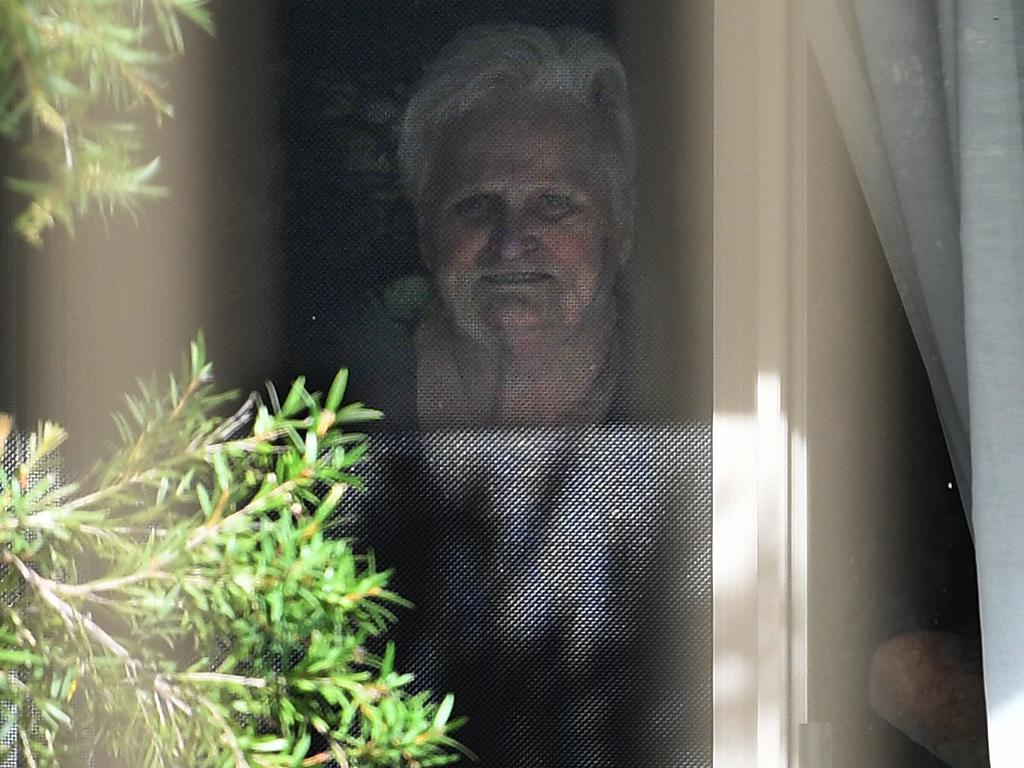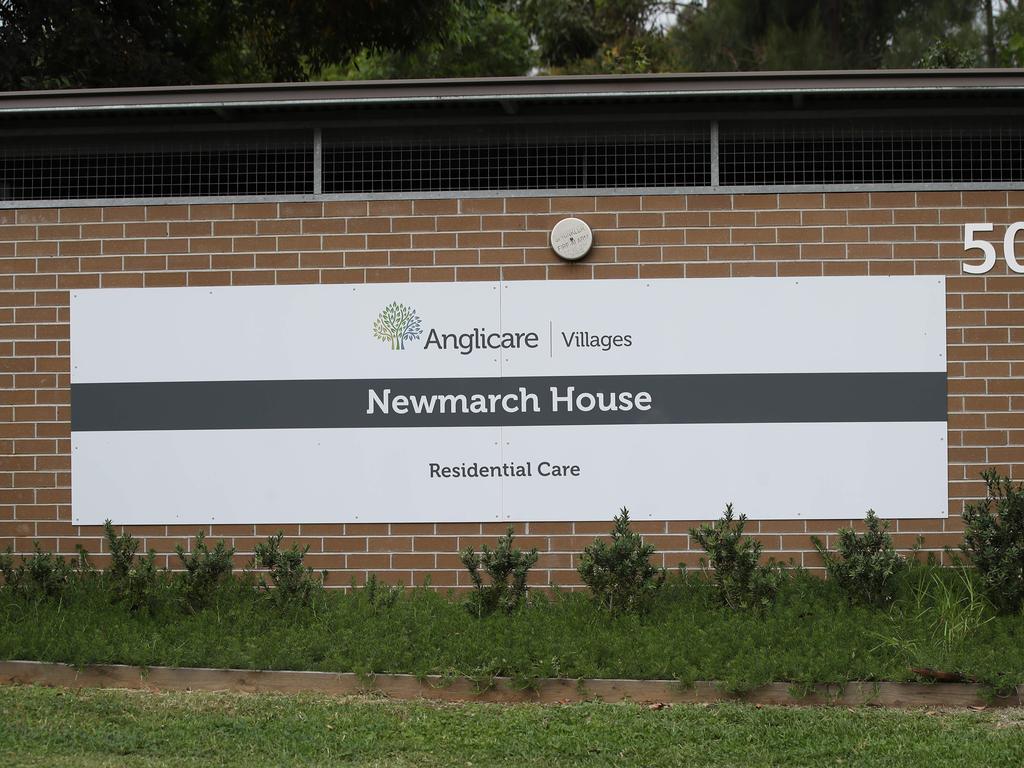Coronavirus: dying in their beds as ‘bushfire’ tears through Newmarch House
It came in on the hands of a carer and once it gained hold it spread like a bushfire.

It came in on the hands of a carer and once it gained hold it spread like a bushfire. Coronavirus has infected more than a third of the residents of the Newmarch House nursing home, and of the 37 who tested positive, an astounding one in three have died. Twenty-two staff have also been infected.
The outbreak began in mid-April after an aged-care staffer with COVID-19 worked six shifts at the western Sydney nursing home while infectious, unaware she had the disease.
“No one could know where the bug was sown, what contact the infected worker had with all sorts of residents,” says University of Sydney emeritus professor Stephen Leeder. “It’s like a bushfire. It could happen in a lot of aged-care facilities. Once you put the spark into the dry bush it’s very difficult to turn around and say we should have done more.”

The 102 residents of Newmarch House live within easy access of a major teaching hospital, Nepean, just over 1km away. Like hospitals throughout the country, Nepean Hospital in recent weeks has been ramping up its intensive care unit capacity and supply of ventilators.
Yet the hospital has cared for few of the 37 elderly residents of Newmarch House who have been infected in a local epidemic that threatens to overtake the Ruby Princess disaster as the country’s deadliest outbreak. The majority of the 13 Newmarch House residents who have died of COVID-19 have passed away at the nursing home, which despite being turned into a “pseudo-hospital” lacks intensive care capacity and a supply of ventilators.
In the days after the outbreak became known, Anglicare hastily arranged end-of-life plans for those who did not have one already in place. The decision to shun invasive treatment has been made at the behest of the residents themselves and, if they lack capacity, their families.
“The likelihood of being able to resuscitate a severely ill patient in their 80s or 90s is very low,” Professor Leeder says. “Ventilators are not Harry Potter’s magic wand. You need essentially a strong, healthy body to be able to make the most of a ventilator. If people don’t have that, there are really serious questions about whether it’s a wise course of action.”
The federal government revealed on Friday that throughout the country there have been 23 outbreaks of COVID-19 at aged-care facilities.
“Of those 23, 15 facilities have completely cleared the virus, eight are still dealing with it, but there will be more that will be cleared in the coming days,” said Aged Care Minister Richard Colbeck.
“I think that’s a great result, and in the majority of cases, it’s been one, two or three cases within a facility.”

The only other outbreak that has come anywhere close to the Newmarch House epidemic in aged care was at the Dorothy Henderson Lodge in northwest Sydney, where six residents died from COVID-19 in March and early April. Anglicare did all it could to limit the spread of the virus at Newmarch House, isolating residents and putting in place rigorous infection control procedures when the outbreak became known, but it was already too late.
The virus appears to have slipped through prevention measures in the first place. Rhe infected worker was not displaying any signs of illness and did not disclose any contact with a COVID-19-positive case, thus evading the centre’s screening efforts.
The reasons that the virus has spread so catastrophically in the nursing home are being examined by health authorities at state and federal level, but Professor Leeder says the answer may turn out to be the obvious one: the fact that the infected worker cared for residents for almost a week while infectious meant that there was ample opportunity for the virus to spread.
“Unfortunately we know that one infected carer administering care to 10 or 20 patients could infect all of them very easily, especially if they are vulnerable,” Professor Leeder says.
“The conditions for an infective takeoff like we saw with Newmarch are there in other aged-care facilities as well, if the virus gets in. It’s a ghastly tragedy. There’s no other word for it.”
The agony of family members dealing with the crisis at Newmarch has been amplified by Anglicare’s deep failures of communication. Phone lines have been ringing out as family members desperately seek information, and those who refused to sign the end-of-life plans the centre scrambled to co-ordinate have been left in the dark as to treatment.
Anthony Bowe, whose 76-year-old mother Patricia Shea is sick with COVID-19 inside Newmarch House, declined to complete the end-of-life plan that was offered. But he now has no idea what arrangements will be put in place for the care of his mother should she deteriorate.
“I don’t know where I stand,” Mr Bowe told The Weekend Australian. “I don’t know if mum has signed (an advance care directive) previously.
“She might have one in place that I need to rescind, because corona is a whole set of different circumstances so you need different requirements.”
Mr Bowe said signing an end-of-life plan meant relatives had no rights to make adjustments to the care plans of their loved ones. “If you’ve signed an end-of-life plan, you get taken out of the equation, even though the end-of-life plan was signed not knowing the COVID situation.
“Some of the other families have said once you’ve signed, they’ll ring you an hour before their loved one is dead and say come and hold their hand while they pass.
“These people are not interested in saving lives, they’re only interested in letting old people go supposedly peacefully, but these people are not going peacefully.”
As the deaths mount, relatives of those inside Newmarch gather each day in the late afternoon on the lawn in front of the nursing home.
Mr Bowe was there one evening this week as an ambulance approached with its sirens on, a portent of another looming tragedy. For the patient inside, he couldn’t help but feel that it was already too late.







To join the conversation, please log in. Don't have an account? Register
Join the conversation, you are commenting as Logout